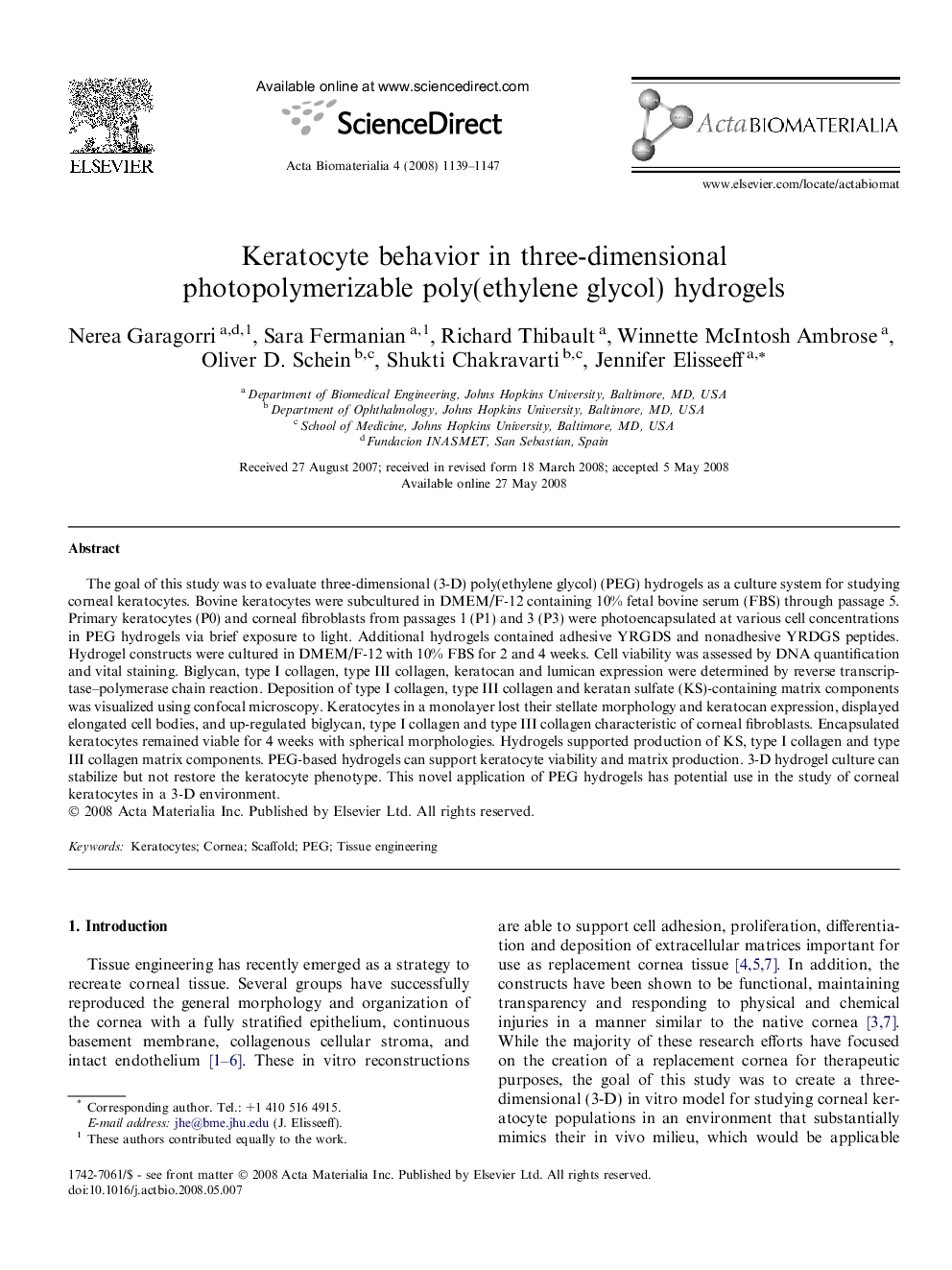| Article ID | Journal | Published Year | Pages | File Type |
|---|---|---|---|---|
| 1546 | Acta Biomaterialia | 2008 | 9 Pages |
The goal of this study was to evaluate three-dimensional (3-D) poly(ethylene glycol) (PEG) hydrogels as a culture system for studying corneal keratocytes. Bovine keratocytes were subcultured in DMEM/F-12 containing 10% fetal bovine serum (FBS) through passage 5. Primary keratocytes (P0) and corneal fibroblasts from passages 1 (P1) and 3 (P3) were photoencapsulated at various cell concentrations in PEG hydrogels via brief exposure to light. Additional hydrogels contained adhesive YRGDS and nonadhesive YRDGS peptides. Hydrogel constructs were cultured in DMEM/F-12 with 10% FBS for 2 and 4 weeks. Cell viability was assessed by DNA quantification and vital staining. Biglycan, type I collagen, type III collagen, keratocan and lumican expression were determined by reverse transcriptase–polymerase chain reaction. Deposition of type I collagen, type III collagen and keratan sulfate (KS)-containing matrix components was visualized using confocal microscopy. Keratocytes in a monolayer lost their stellate morphology and keratocan expression, displayed elongated cell bodies, and up-regulated biglycan, type I collagen and type III collagen characteristic of corneal fibroblasts. Encapsulated keratocytes remained viable for 4 weeks with spherical morphologies. Hydrogels supported production of KS, type I collagen and type III collagen matrix components. PEG-based hydrogels can support keratocyte viability and matrix production. 3-D hydrogel culture can stabilize but not restore the keratocyte phenotype. This novel application of PEG hydrogels has potential use in the study of corneal keratocytes in a 3-D environment.
